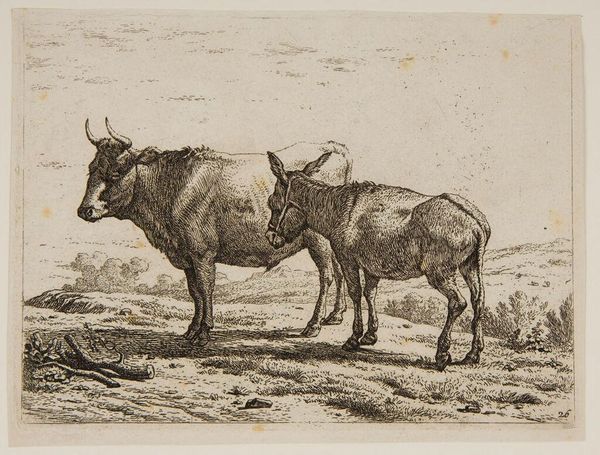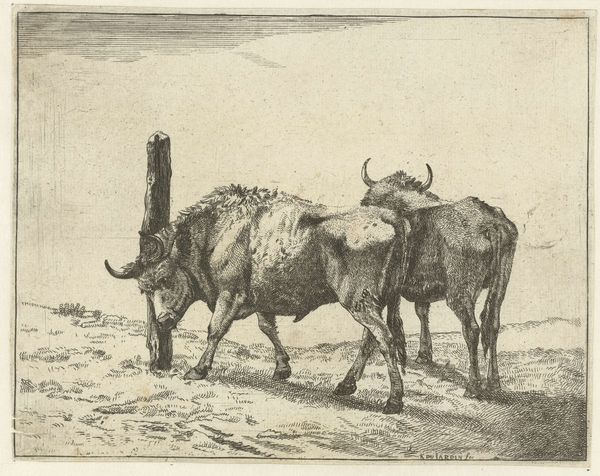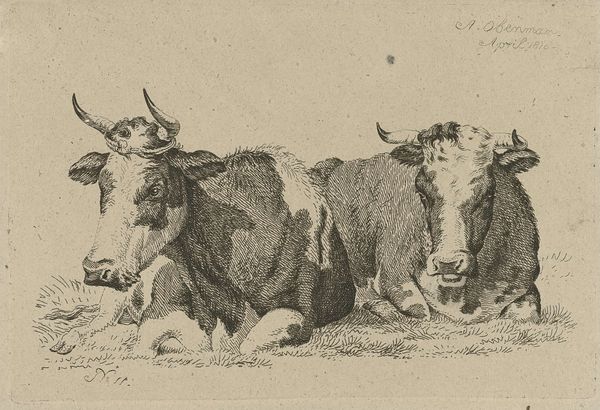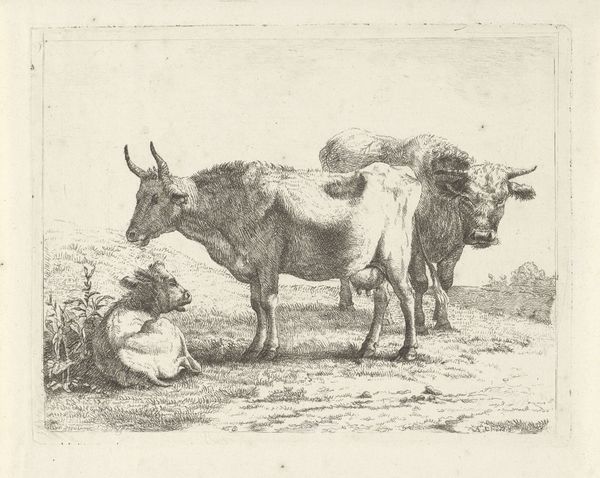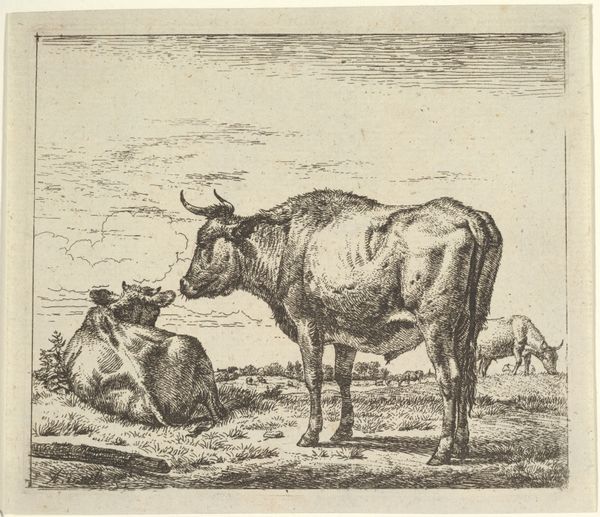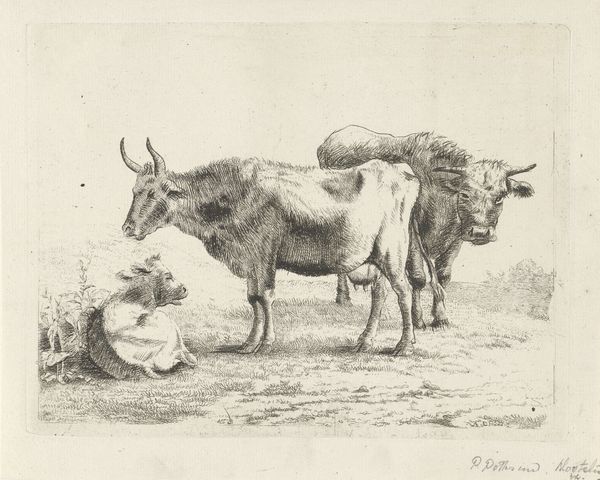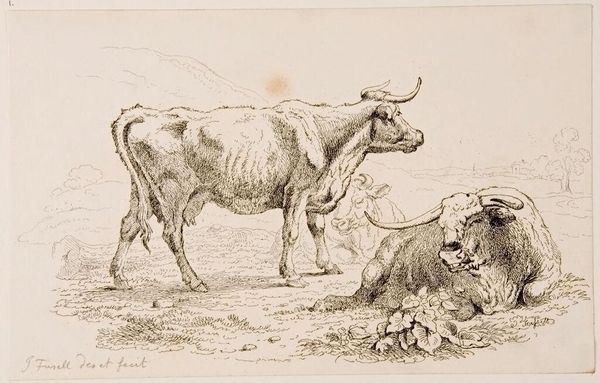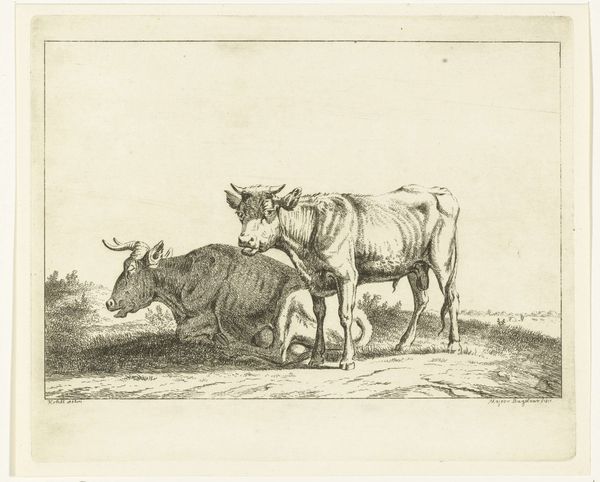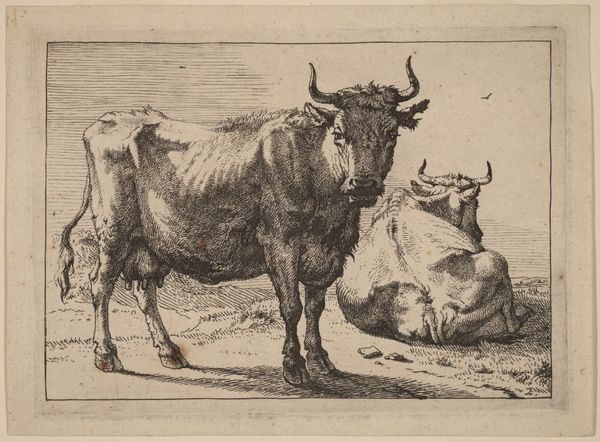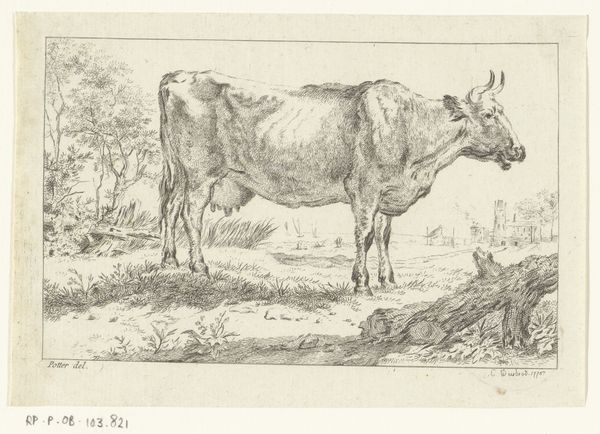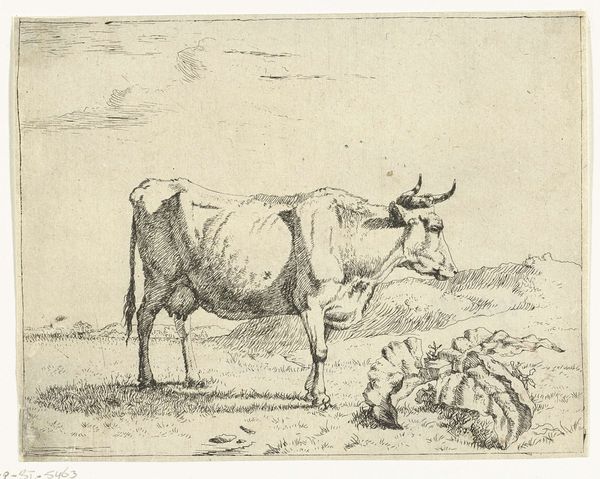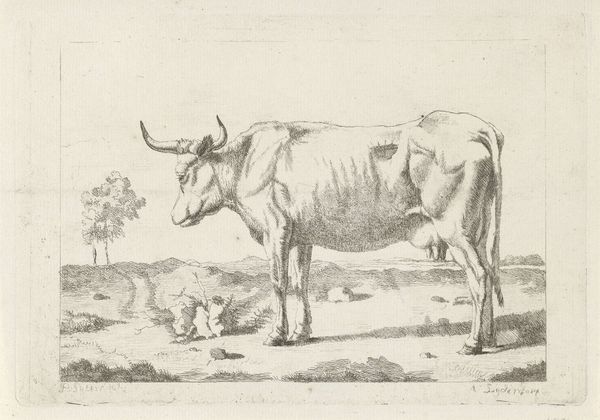
print, engraving
#
baroque
#
animal
# print
#
pen sketch
#
landscape
#
genre-painting
#
engraving
#
realism
Dimensions: height 99 mm, width 167 mm
Copyright: Rijks Museum: Open Domain
This print of cattle was made with etching by an anonymous artist. Etching involves covering a metal plate with a waxy, acid-resistant substance called a ground, through which the artist scratches an image. The plate is then bathed in acid, which bites into the exposed lines, creating grooves. Ink is applied, filling these grooves, and the surface is wiped clean. Finally, the plate is pressed onto paper, transferring the inked image. The dense hatching and cross-hatching demonstrate the artist’s skill in using the etching needle to create subtle tonal variations and textures. The lines give shape to the animals, capturing the solidity of their forms and the thickness of their fur. As a method of image production, etching emerged in early modern Europe, becoming a means for wider circulation. It could reproduce existing artworks or create novel images, democratizing art by making it more accessible than unique paintings. This print is an example of the industrialized techniques of image-making, where each one is the result of skilled labor.
Comments
No comments
Be the first to comment and join the conversation on the ultimate creative platform.
